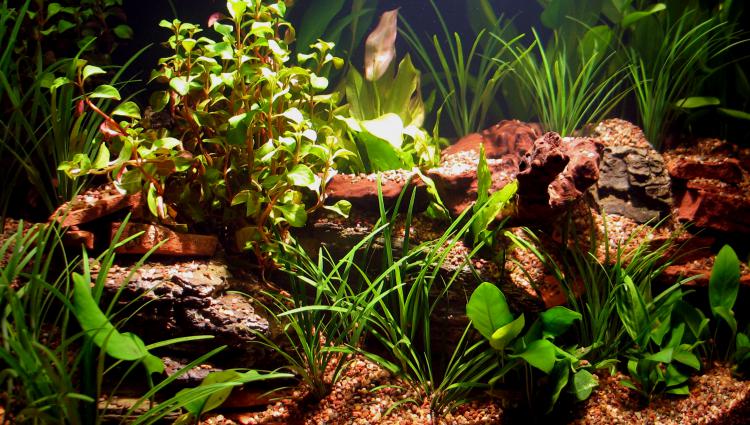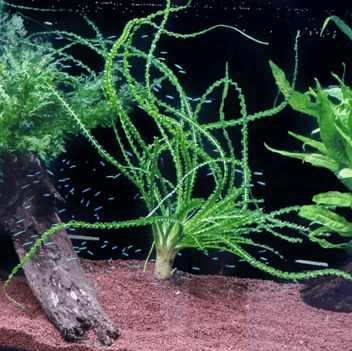Discover the best low light aquarium plants that are perfect for beginners looking to create a vibrant and thriving underwater ecosystem.
Benefits of Low Light Aquarium Plants
Low light aquarium plants have several benefits for beginners. Firstly, they are easy to care for and require minimal maintenance. This makes them ideal for those who are new to aquarium keeping and may not have much experience with plant care.
Secondly, low light aquarium plants can thrive in conditions with limited or indirect lighting. They do not require intense lighting setups or special equipment, which can be a cost-effective option for beginners.
Additionally, these plants can help to create a more natural and aesthetically pleasing environment in the aquarium. They can provide hiding spots for fish, improve water quality by absorbing excess nutrients, and contribute to the overall balance of the ecosystem.
Overall, low light aquarium plants are a great choice for beginners as they are easy to care for, adaptable to various lighting conditions, and offer numerous benefits to the aquarium ecosystem.
Top 5 Low Light Aquarium Plants for Beginners
1. Anubias: Anubias is a popular low light aquarium plant known for its hardiness and versatility. It can thrive in low to moderate lighting conditions and requires minimal care. Anubias species have attractive broad leaves that add a lush and vibrant look to the aquarium.
2. Java Fern: Java Fern is another excellent choice for beginners. It can tolerate low light conditions and does not require CO2 supplementation. Java Fern has unique, textured leaves that create a beautiful visual appeal in the aquarium.
3. Cryptocoryne: Cryptocoryne plants are well-suited for low light aquariums. They are known for their wide range of leaf shapes and colors, adding variety and interest to the tank. These plants are relatively undemanding and can thrive in low light without the need for intense care.
4. Amazon Sword: Amazon Sword is a popular choice for beginners due to its adaptability and ease of care. It can tolerate a wide range of lighting conditions, including low light. Amazon Sword has long, sword-like leaves that provide a natural and lush appearance to the aquarium.
5. Java Moss: Java Moss is a versatile and hardy plant that can thrive in low light conditions. It can be attached to driftwood or rocks to create a beautiful carpet effect or used to cover surfaces in the aquarium. Java Moss also provides a natural habitat for small fish and shrimp.
These top 5 low light aquarium plants are perfect for beginners as they are easy to care for, visually appealing, and can thrive in various lighting conditions.
Tips for Caring for Low Light Aquarium Plants
1. Choose the right substrate: Low light aquarium plants do not have high nutrient requirements, but it is still important to provide them with a suitable substrate. Use a nutrient-rich substrate or add root tabs to ensure the plants receive essential nutrients.
2. Avoid high-intensity lighting: Low light plants thrive in moderate to low light conditions. Avoid using high-intensity lighting, as it can lead to algae growth and stress the plants.
3. Maintain water quality: Regular water changes and proper filtration are essential for the health of low light aquarium plants. Monitor water parameters such as pH, temperature, and ammonia levels to ensure they remain within the optimal range.
4. Prune and trim as needed: Low light plants tend to grow at a slower pace compared to high light plants. However, they still require occasional pruning and trimming to remove any dead or decaying leaves and promote healthy growth.
5. Consider supplementing CO2: While low light aquarium plants can survive without CO2 supplementation, adding a carbon dioxide supplement can enhance their growth and overall health. Consider using liquid carbon or DIY CO2 systems if desired.
By following these tips, beginners can ensure the proper care and maintenance of their low light aquarium plants, creating a thriving and visually appealing underwater ecosystem.
Creating a Stunning Aquascape with Low Light Plants
Creating a stunning aquascape with low light plants is an achievable goal for beginners. Here are some tips to help you get started:
1. Plan the layout: Before adding any plants, plan the layout of your aquascape. Consider the size and shape of your aquarium, as well as the desired focal points and levels of the tank. This will help you create a visually appealing arrangement.
2. Use different heights and textures: Incorporate low light plants of varying heights and textures to add depth and visual interest to the aquascape. Combine plants with different leaf shapes, colors, and sizes to create a dynamic and captivating display.
3. Create focal points: Select a few standout plants to serve as focal points in your aquascape. These plants should be visually striking and draw attention to specific areas of the tank.
4. Add hardscape elements: Enhance the overall aesthetic of your aquascape by adding hardscape elements such as rocks, driftwood, or decorative items. These elements can complement the low light plants and create a more natural and balanced look.
5. Regular maintenance: To keep your aquascape looking its best, perform regular maintenance tasks such as pruning, removing dead leaves, and cleaning the aquarium glass. This will help prevent algae growth and maintain the overall health of the plants.
By following these tips and experimenting with different plant combinations, beginners can create a stunning aquascape using low light plants.
Common Mistakes to Avoid with Low Light Aquarium Plants
1. Overfeeding: Overfeeding can lead to excess nutrients in the water, causing algae growth and negatively impacting the health of low light plants. Feed your fish sparingly and avoid overfeeding.
2. Neglecting water changes: Regular water changes are essential for maintaining water quality and ensuring the health of low light plants. Neglecting water changes can lead to a buildup of toxins and nutrient imbalances, which can harm the plants.
3. Using inappropriate lighting: Low light plants do not require intense lighting. Using high-intensity lighting can lead to algae problems and stress the plants. Use appropriate lighting for the specific needs of your low light plants.
4. Ignoring plant requirements: Each low light plant has specific care requirements. Ignoring these requirements can result in poor growth or even plant death. Research the needs of your plants and provide the necessary conditions for their optimal health.
5. Overcrowding the aquarium: Overcrowding the aquarium with too many plants can lead to competition for resources and limited space for growth. Give your low light plants enough space to thrive and avoid overcrowding.
By avoiding these common mistakes, beginners can ensure the success and health of their low light aquarium plants.
Additional Resources:
All About Live Aquarium Plants
How To Propagate Ludwigia Plants





.jpg?width=352&name=Betta%20Fish%20In%20Tank%20SS%20(1).jpg)
Leave a Comment